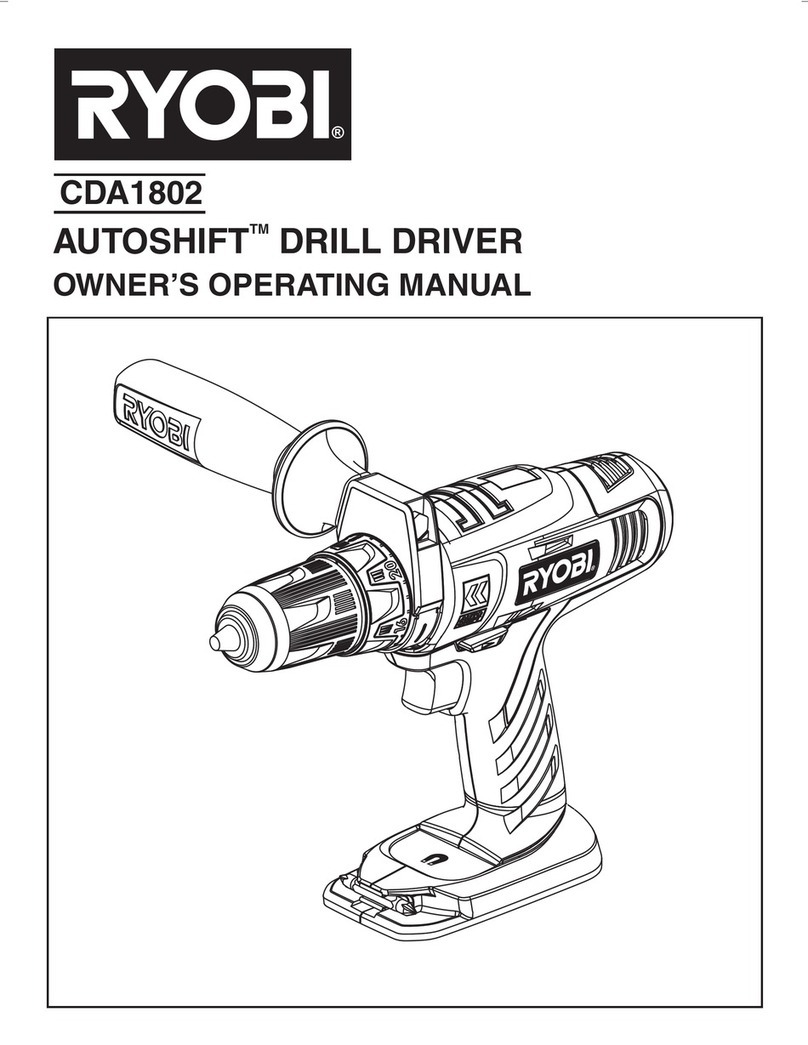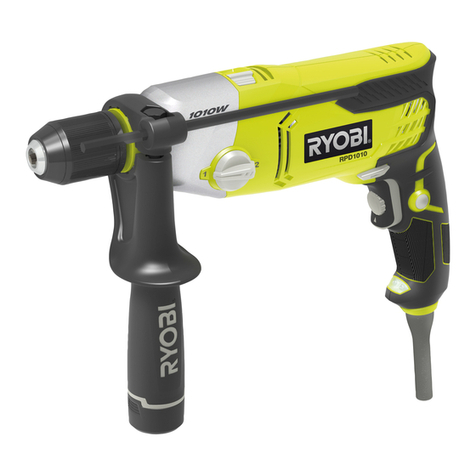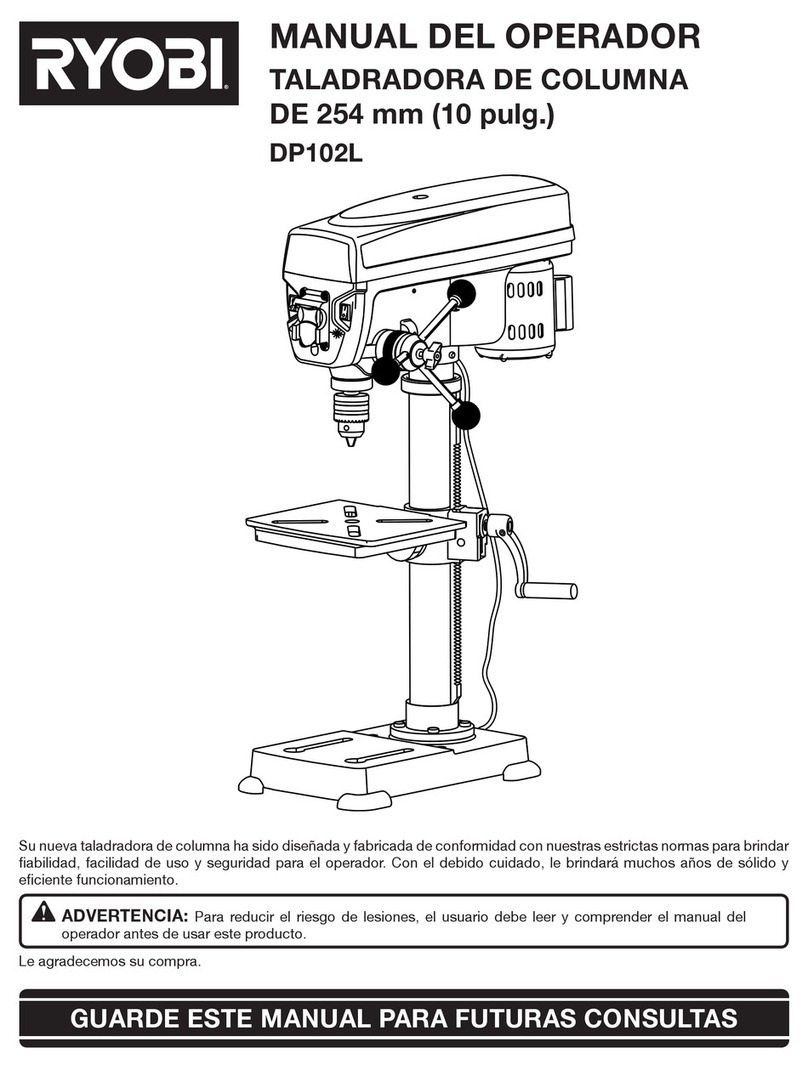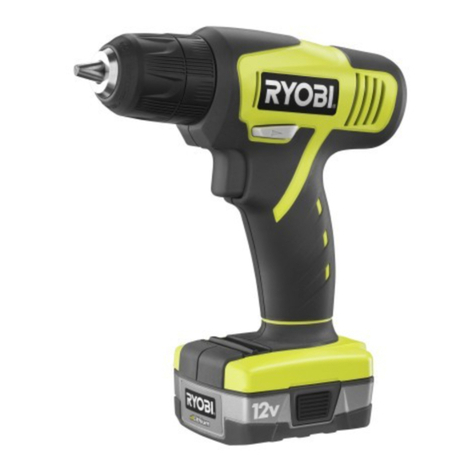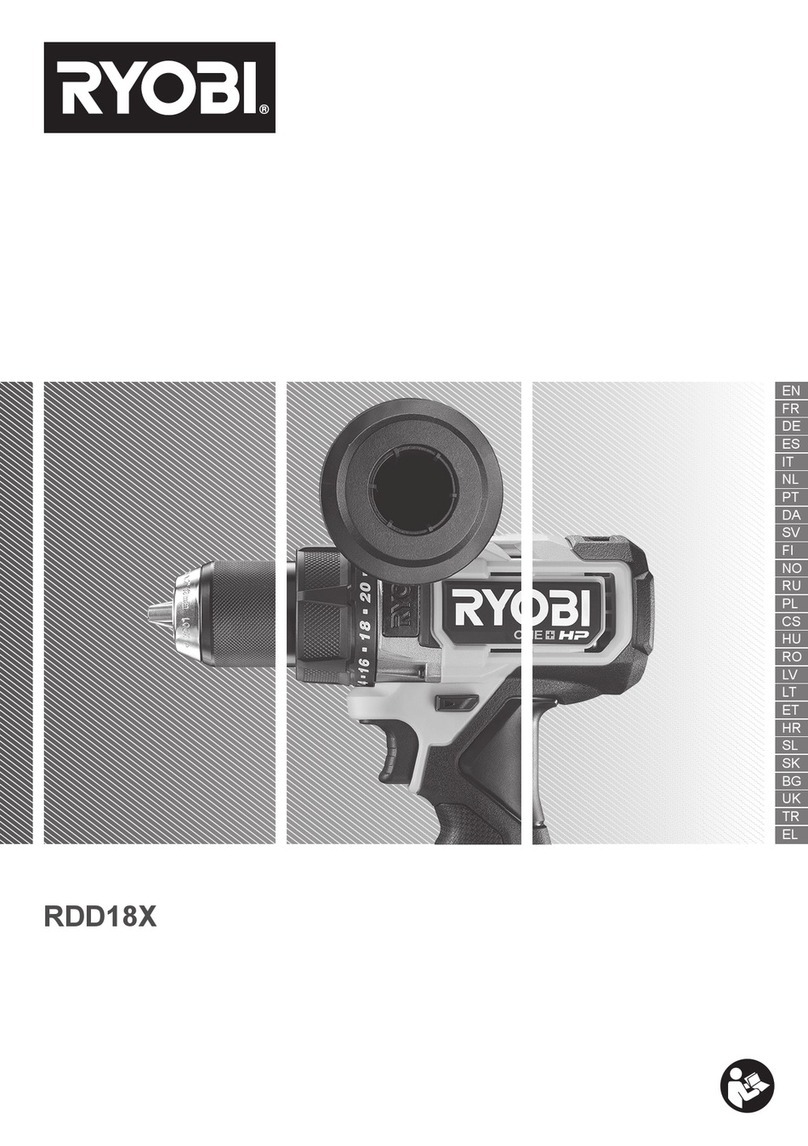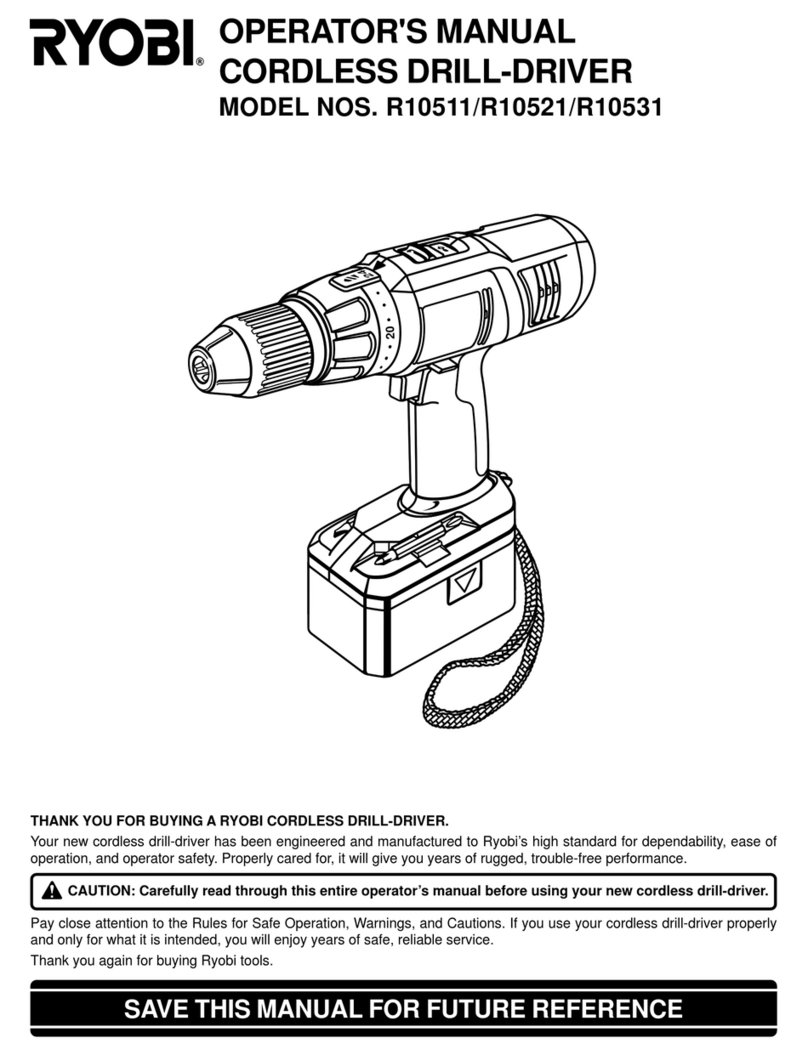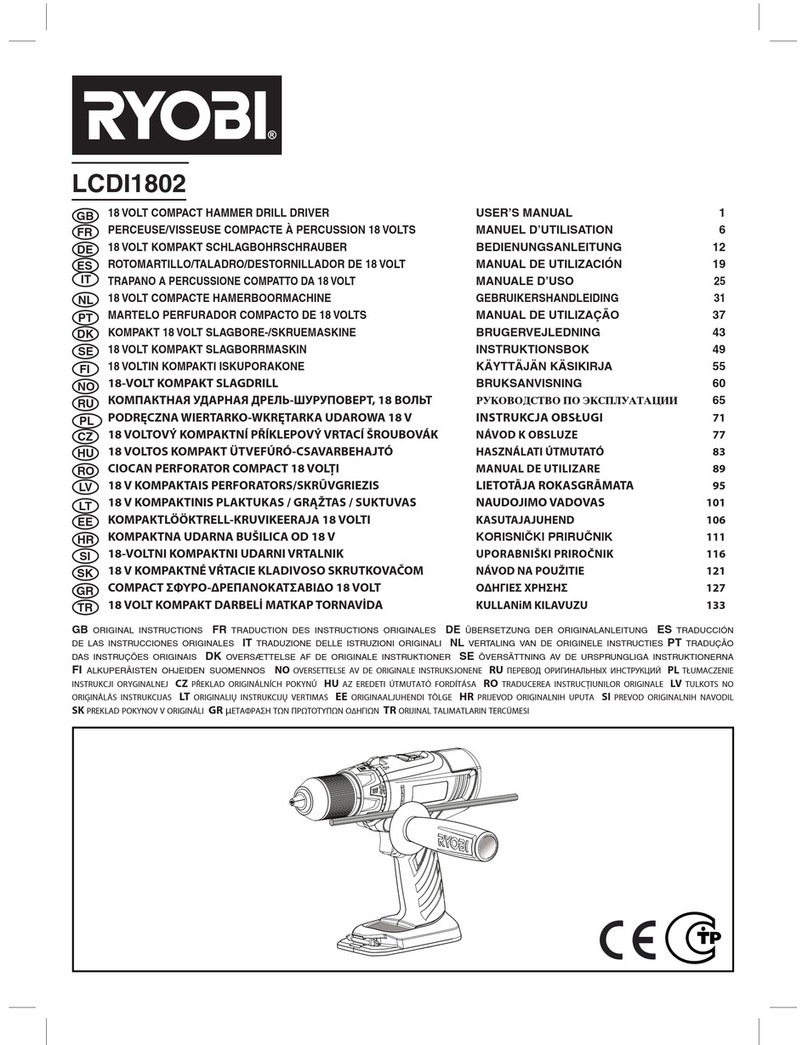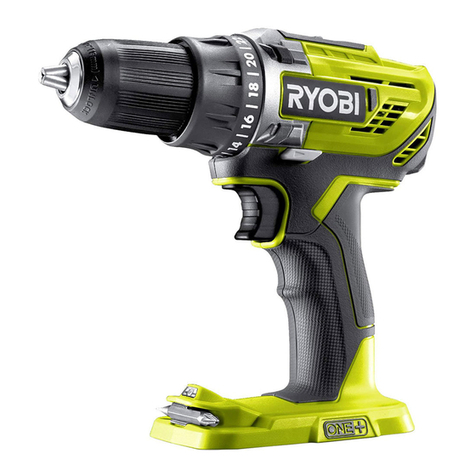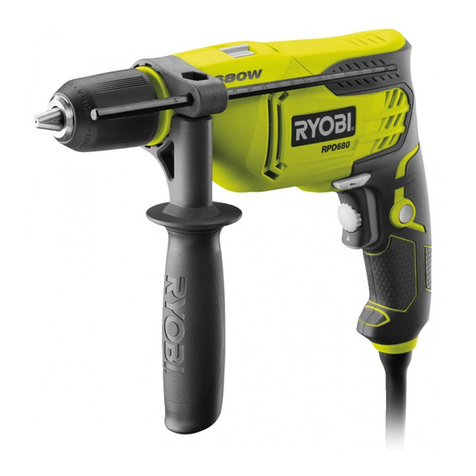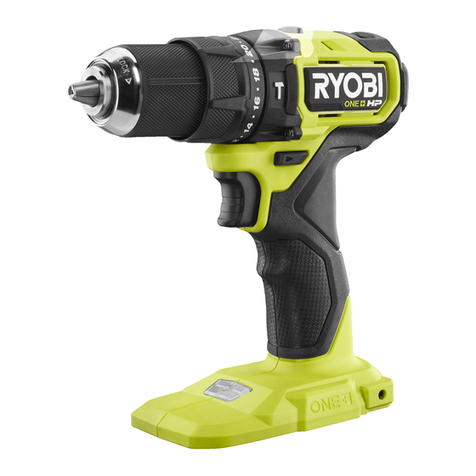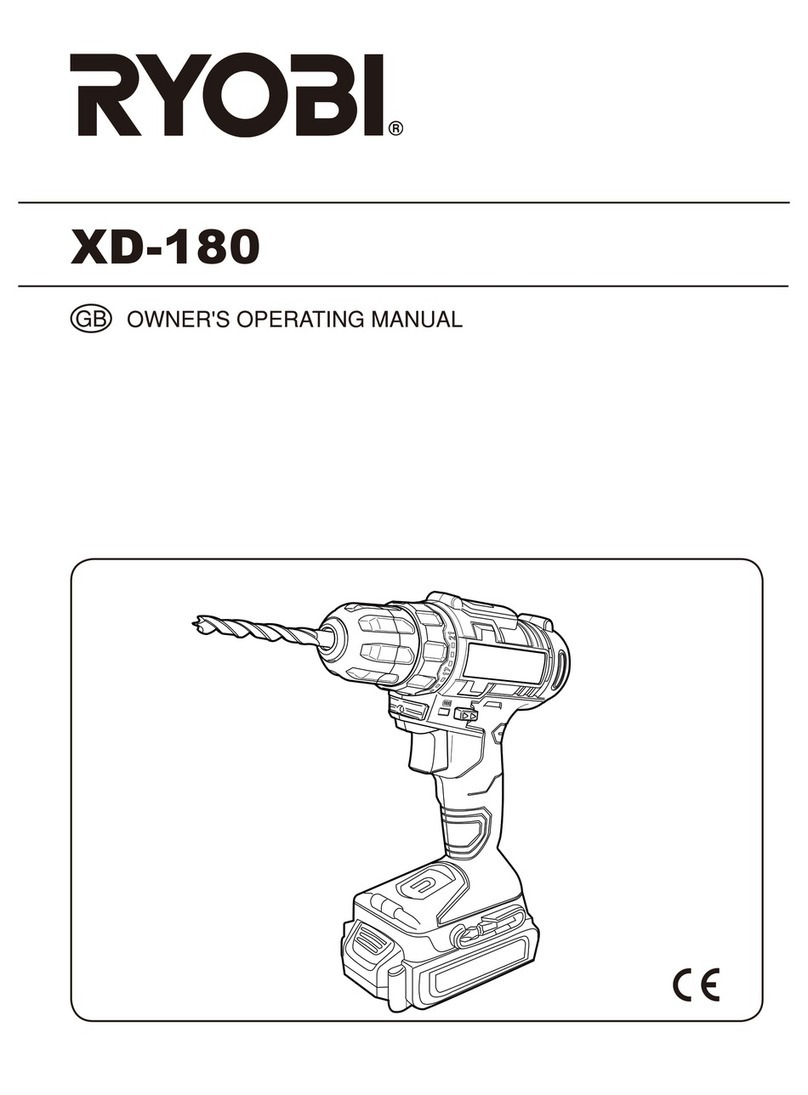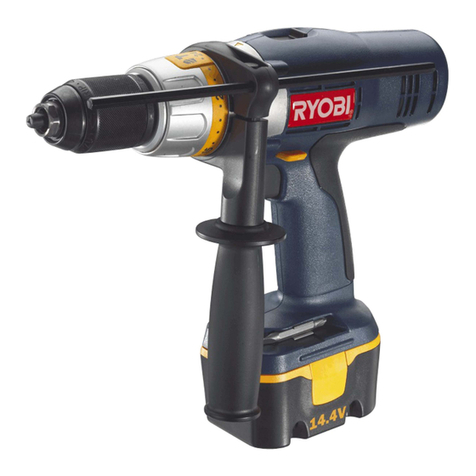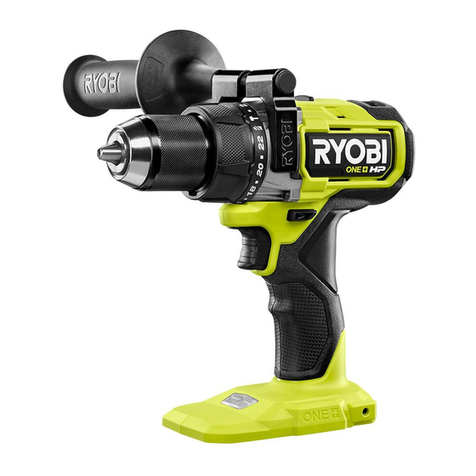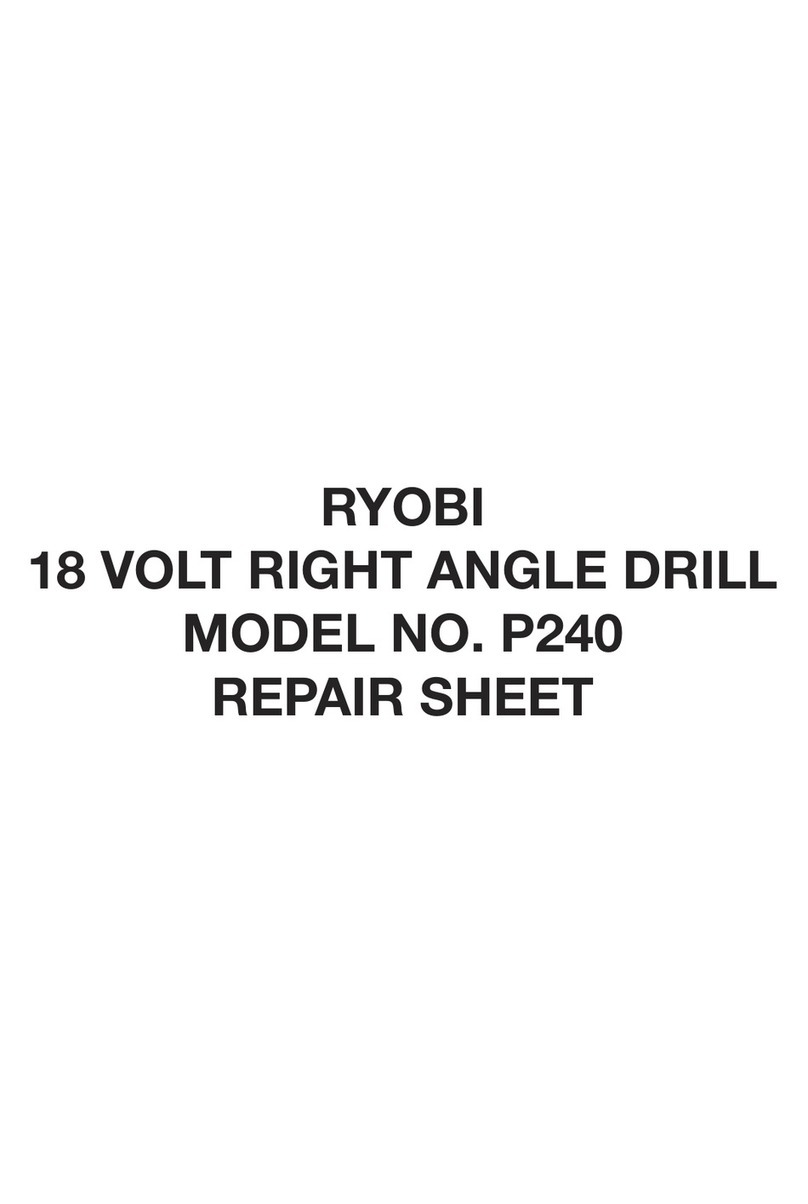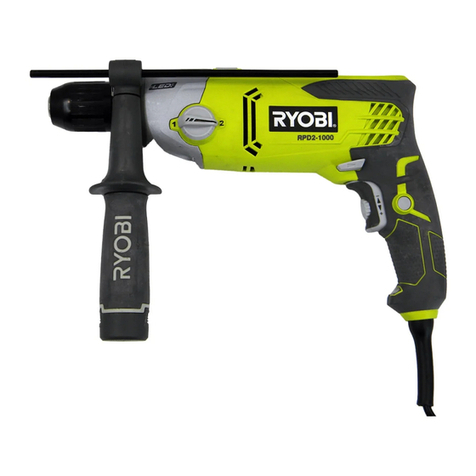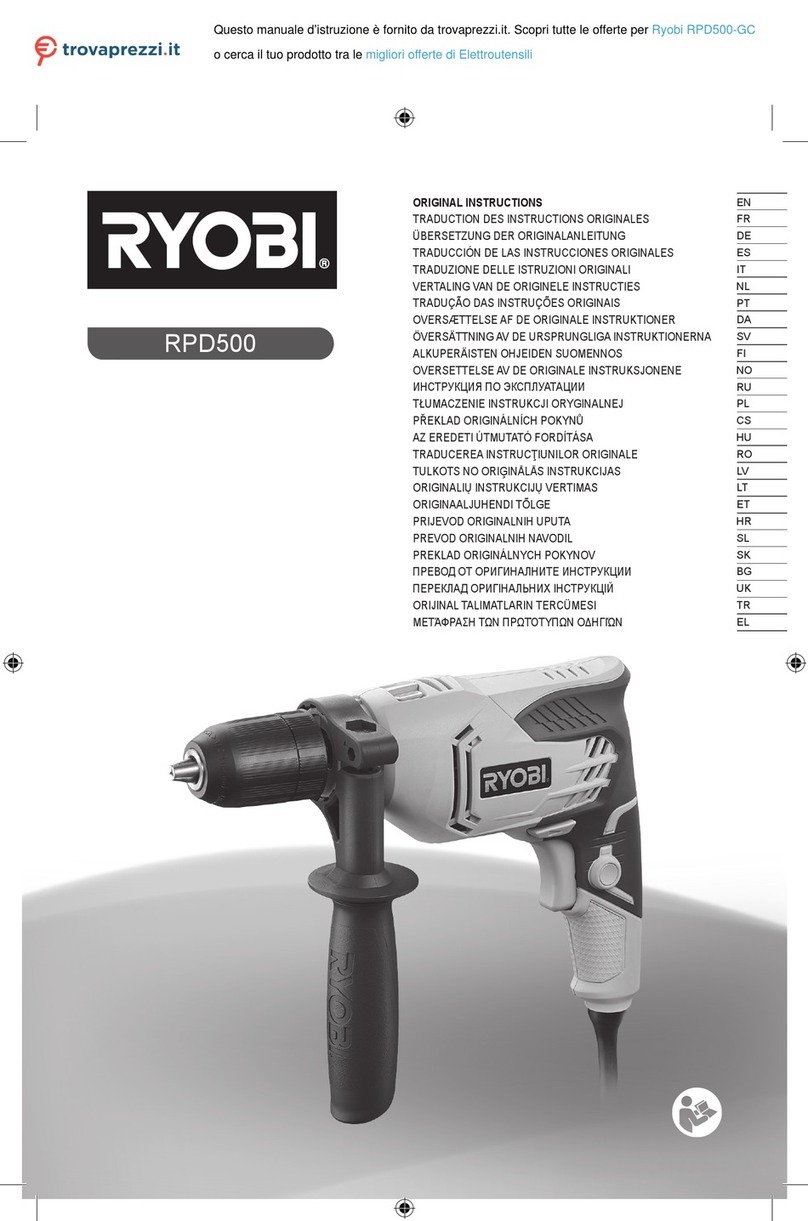
Page 3
READ ALL INSTRUCTIONS
1. KNOW YOUR POWER TOOL. Read owner's
manual carefully. Learn its applications and
limitations as well as the specific potential
hazards related to this tool.
2. GUARD AGAINST ELECTRICAL SHOCK by
preventing body contact with grounded
surfaces. For example: Pipes, radiators,
ranges, refrigerator enclosures.
3. KEEP GUARDS IN PLACE and in working
order.
4. KEEP WORK AREA CLEAN. Cluttered areas
and benches invite accidents.
5. AVOID DANGEROUS ENVIRONMENT. Don't
use power tool in damp or wet locations or
expose to rain. Keep work area well lit.
6. KEEP CHILDREN AND VISITORS AWAY.
All visitors should wear safety glasses and be
kept a safe distance from work area. Do not
let visitors contact tool or extension cord.
7. STORE IDLE TOOLS. When not in use tools
should be stored in a dry and high or locked-
up place - out of the reach of children.
8. DON'T FORCE TOOL. It will do the job better
and safer at the rate for which it was designed.
9. USE RIGHT TOOL. Don't force small tool or
attachment to do the job of a heavy duty tool.
Don't use tool for purpose not intended - for
example - A circular saw should never be
used for cutting tree limbs or logs.
10. WEAR PROPER APPAREL. Do not wear
loose clothing or jewelry that can get caught
in the tool's moving parts and cause personal
injury. Rubber gloves and nonskid footwear
are recommended when working outdoors.
Wear protective hair covering to contain long
hair and keep it from being drawn into nearby
air vents.
11. ALWAYS WEAR SAFETY GLASSES.
Everyday eyeglasses have only impact-
resistant lenses; they are NOT safety glasses.
12. PROTECT YOUR LUNGS. Wear a face or
dust mask if operation is dusty.
13. PROTECT YOUR HEARING. Wear hearing
protection during extended periods of
operation.
14. DON'T ABUSE CORD. Never carry tool by
cord or yank it to disconnect from receptacle.
Keep cord from heat, oil and sharp edges.
15. SECURE WORK. Use clamps or a vise to
hold work. Both hands are needed to operate
the tool.
16. DON'T OVERREACH. Keep proper footing
and balance at all times. Do not use on a
ladder or unstable support.
17. MAINTAIN TOOLS WITH CARE. Keep tools
sharp at all times, and clean for best and
safest performance. Follow instructions for
lubricating and changing accessories.
18. DISCONNECT TOOLS. When not in use,
before servicing, or when changing
attachments,blades,bits,cutters,etc.,alltools
should be disconnected from power supply.
19. REMOVE ADJUSTING KEYS AND
WRENCHES. Form habit of checking to see
thatkeysandadjustingwrenchesareremoved
from tool before turning it on.
20. AVOID ACCIDENTAL STARTING. Don't
carry plugged-in tools with finger on switch.
Be sure switch is off when plugging in.
21. MAKE SURE YOUR EXTENSION CORD IS
IN GOOD CONDITION. When using an
extension cord, be sure to use one heavy
enough to carry the current your product will
draw. An undersized cord will cause a drop in
line voltage resulting in loss of power and
overheating. A wire gage size (A.W.G.) of at
least 14 is recommended for an extension
cord 50 feet or less in length. A cord exceeding
100 feet is not recommended. If in doubt, use
the next heavier gage. The smaller the gage
number, the heavier the cord.
22. OUTDOOR USE EXTENSION CORDS.
When tool is used outdoors, use only
extension cords suitable for use outdoors.
Outdoor approved cords are marked with
the suffix W-A, for example - SJTW-A or
SJOW-A.
23. KEEP BITS CLEAN AND SHARP. Sharp bits
minimize stalling and kickback.
RULES FOR SAFE OPERATION
